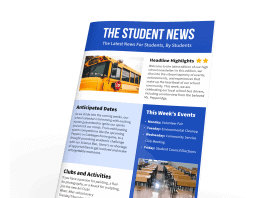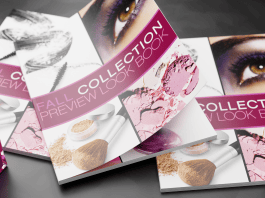Last updated on August 6th, 2024 at 02:42 pm
Designing a perfect bound book for the first time can be difficult. This explains a few first time design mistakes, and what to do to properly design perfect bound books.
Design your perfect bound books in single pages, not spreads
At Printivity, perfect bound books are not printed in spreads (except for the front and back cover) because we glue together sheets that are the dimension of the perfect bound book. For instance, when making an 8.5” x 11” bound book, the resulting pages being bound would be 8.5” x 11” in dimension. Therefore, we would not be able to use 2-page spreads, except for the front and back covers. Converting the spreads design to single pages on our end can be very difficult, especially when the middle of the spreads (where the two pages separate) don’t have any bleed space.

Account for viewing loss of the inside pages due to the width of the spine
When designing inside pages for perfect bound books, the extra area that the spine takes up, also known as the gutter, must be accounted for. Depending on the size of the book, the gutter can be anywhere from 1/4” – 1/2”. An example of a perfect bound book gutter can be seen below.

Therefore, there must be an extra 1/4”-1/2” of safety margin space on the side of the page where the gutter / spine will be. No text can be in this safety margin, as well as critical images that you want visible on your page. Make sure to keep track of which pages will be on the left and right side of the spine of your perfect bound book. Do this so you can correctly place your safety margins on the correct side of the page.
Don’t expect images that cover two pages to be perfectly aligned.
Having images extending 2 pages on a perfect binding is not practical because the gutter will break the continuity of the image. It can be extremely hard to align an image spread with regards to the gutter. This is because the gutter size can vary depending on the thickness of the book. An example of a 2-page image spread that was eaten by the gutter (but later fixed) is shown below. The flag is obviously broken up from the gutter and the overall image and page is not visually appealing.

If you want two page image spreads, use fold-out page spreads
If 2 page spreads are absolutely necessary for your perfect bound book, try designing as a fold-out sheet. The spread will be printed on a single sheet that’s the size of 2 pages and the print will not have any splits. Printivity offers this service as a custom order to anyone who wants foldout page spreads in their perfect bound books.


Designing spines
The spine of a perfect binding needs to be designed exactly the width of the book. The spine of the book is attached to the center of the spread of the front cover and back cover. For books with a solid color front and back cover and spine, this can be relatively easy. The printer can trim off the extra width from the spread without worrying about the design.
It is recommended to only have the spine be a different color from the front cover and back cover with high page counts. Otherwise, this can lead to design problems with part of the spine moving to the front cover or back cover and not being completely centered. Thus, it is perfect design practice to make sure the spine is the same color as the front cover or back cover pages. Here is an example of a book cover spread with a 3/4″ spine. Instead of the book design spread being 17.25″x11.25″ like a regular spread, the spread is 18″x11.25″ to account for the spine of the book.

Figuring out spine width
Calculating the width of the spine can be tricky because the toner adds width to the paper. Depending on what is being printed, and the number of pages the perfect bound book is, the toner can add up to 1/8” of thickness to the spine of the book. Printivity has a spine width calculator that will calculate the thickness of a book without accounting for toner. Thus, the spine thickness value given will be slightly thinner than what it will be.




